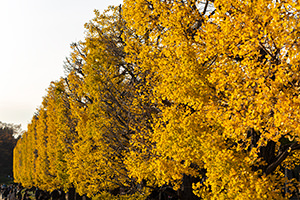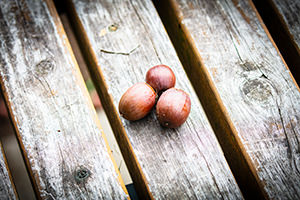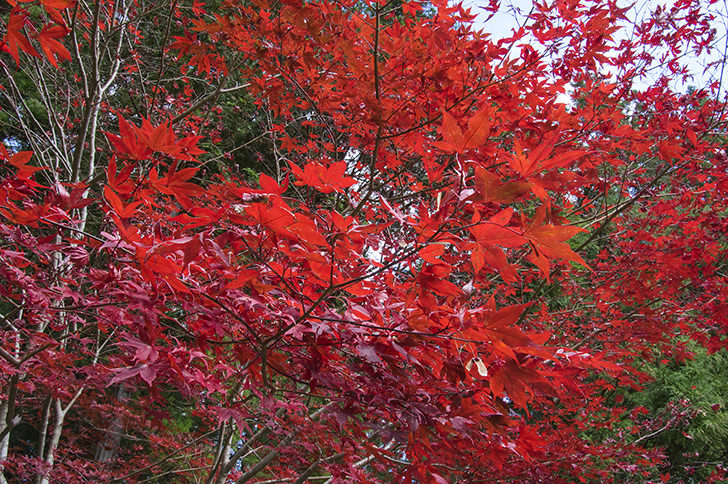What is the first thing to come up in your mind when imagining autumn? Many people who grow up in Japan may imagine a fall breeze, picking up acorns, enjoying autumn food such as mushrooms or chestnuts, and …of course viewing autumn leaves!


Rikugien Gardens, located in the centre areas of Tokyo, is known for its classic Edo-period landscape design, and it is the perfect place to view autumn leaves among many popular parks or streets in Tokyo. From November 22nd to December 4th, the Rikugien Gardens will offer “Nighttime Autumn Foliage Viewing” to the public. The Gardens are reopened at 18:00 after the regular operating hours during the Nighttime Autumn Foliage Viewing so that visitors experience the beauty of autumn leaves illuminated after dark.
During the nighttime viewing event, the gardens are illuminated with soft lighting, creating a magical and atmospheric environment that enhances the colours of the foliage. Visitors can take pictures in beautiful gardens with gorgeous autumn foliage at various photogenic spots prepared by the Rikuguen Gardens.
The scenery of brightly coloured autumn leaves mixing with darker shades of gold and red and reflected on the surface of the pond is breathtaking.
History of the Rikugien Gardens
Origins (1702)
Rikugien Gardens, located in Tokyo’s Bunkyō ward, are one of the most famous traditional gardens in Japan. Its history dates back to the Edo period (1603- 1868).
Here’s an overview of its history:
Rikugien Gardens were constructed between 1695 and 1702 by Yanagisawa Yoshiyasu, a trusted confidant of the fifth Tokugawa shogun. Yoshiyasu was granted the land by the shogun and commissioned the garden’s creation as a retreat. He designed Rikugien Gardens in the “kaiyu-shiki” (strolling garden) style, which was highly popular during the Edo period. This style allows visitors to walk along a circular path and enjoy various scenic views, with a central pond, man-made hills, and carefully composed landscapes.
The name “Rikugien” means “Garden of the Six Principles of Poetry,” derived from an ancient Chinese classification of poetry. The Rikugien Gardens were designed with literary themes, with 88 scenes representing famous stories and poems.
After the Tokugawa shogunate era (1868-)
After the fall of the Tokugawa shogunate, the ownership of the Rikugien Gardens changed hands and became the property of Iwasaki Yatarō, the founder of the Mitsubishi zaibatsu (conglomerate).
https://en.wikipedia.org/wiki/Iwasaki_Yatar%C5%8D Iwasaki Yatarō, the founder of Mitsubishi
In 1938, Rikugien was donated to the city of Tokyo by the Iwasaki family. It was designated a Special Place of Scenic Beauty by the Japanese government, ensuring its protection and recognition as a cultural asset. The garden was opened to the public shortly afterward, allowing visitors to enjoy its historic beauty.

Modern Era
Today, Rikugien Gardens are a beloved destination for people seeking to experience traditional Japanese gardens in the heart of Tokyo. While it has evolved over the centuries, it still maintains much of its original Edo-period charm, including the central pond, lush trees, and scenic walking paths. The garden is especially popular during the spring when the cherry blossoms bloom, and in autumn, when the maple trees turn vibrant shades of red and orange.https://en.wikipedia.org/wiki/Rikugi-en_Gardens Rikugien Gardens
Momiji-gari (leaf peeping)
What is momiji-gari?
Momiji-gari (紅葉狩り), leaf-peeping is a popular seasonal activity in Japan, where people travel to view and enjoy the vibrant autumn foliage, especially the changing colors of maple trees (momiji) and ginkgo trees (icho).
Origin of Momiji-gari
The origin of momiji-gari can be traced back to the 8th century. One source says that the aristocrats started momiji-gari from the Nara period (710-794) to the Heian period (794-1185). Momiji-gari was a leisure activity of aristocrats. The aristocrats went to mountains or valleys to view autumn leaves changing colours and composed waka poems. Momijigari was an elegant pastime among the aristocrats in those eras, often combined with poetry readings, music, and lavish outdoor banquets. In the Edo period (1603-1868), the ordinary people also began to enjoy viewing autumn leaves. They visited leaf-viewing places to get away from it all to have a relaxing time. The Edo-meisyo-hanagoyomi, a guidebook for popular sightseeing destinations in Edo published in 1827, also introduced autumn leaf-peeping places.
Leaf-peeping: Why is Leef peeping called ‘Momiji-gari’ (Autumn-colours hunting) in Japan?
The Japanese term ‘momiji-gari’ combines two words: “momiji”, meaning “red leaves” or “maple leaves,” and “gari”, meaning “hunting, but why did the term “hunting” come to mean “going to see the autumn leaves”?
There are various theories about it. In the Heian period (794-1185), aristocrats considered “walking” to be vulgar and often travelled by ox-carriages.
Since it was necessary to walk through mountains and valleys to see the autumn leaves, one theory is that they used the expression “hunting” instead of “walking.
Another theory is that the aristocrats gathered autumn leaves in their hands and admired them, and that’s why peep-leafing has become called leaf-hunting. In addition, the verb ‘kari’ in Japanese means not only ‘to hunt’ but also means “to seek out and admire flowers and plants.
Access to Rikugien Gardens
A 7-minute walk from Komagome station (JR line/ Tokyo Metro line) or a 10-minute walk from Sengoku station (Toei Subway)
Regular operating hours
9:00 -17:00 (the entry gate is cloed at 16:30)
Tickets
300 yen (13y.o. and older), 150 yen (65y.o. and older)
Nighttime Autumn Foliage Viewing
Date & Time
November 22 – December 4, 2024
18:00 – 20:30 (last admission 19:30)
- The park will close at 5:00 p.m. and reopen at 6:00 p.m. for special nighttime viewing
- Visitors need to buy a special nighttime viewing ticket to enter the park.
- For safety reasons, some areas are restricted during the night.
Entry is allowed only from the Main Gate and exit gates are the Main Gate and Someimon Gate.
